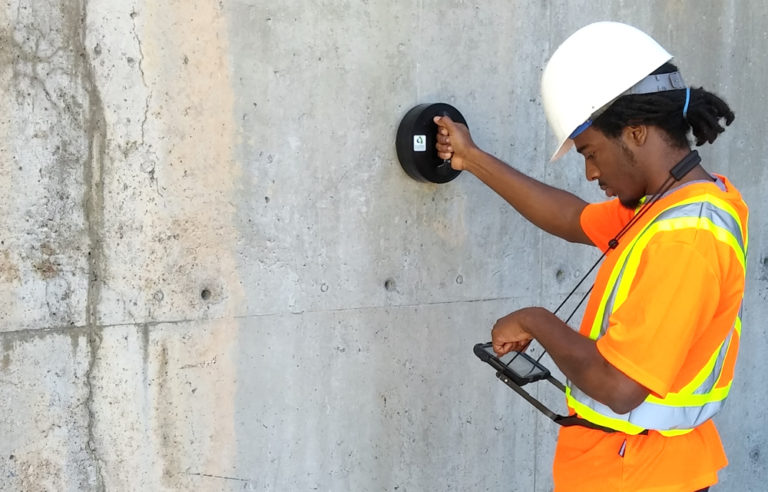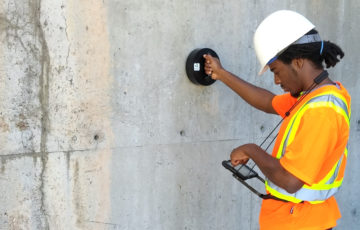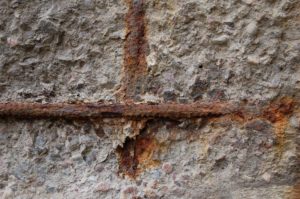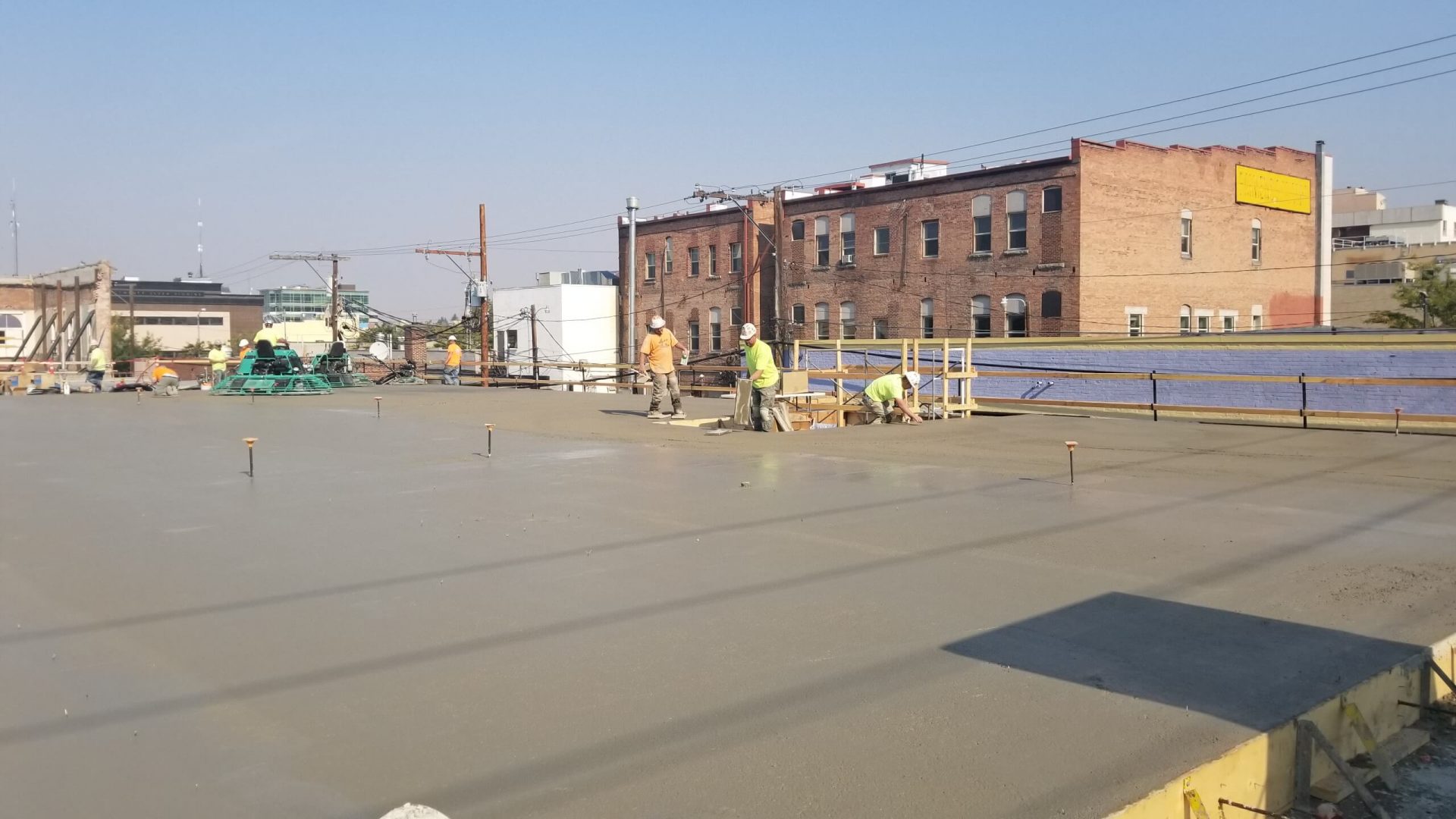Corrosion is a natural process that begins when the steel rebar within reinforced concrete starts to rust. According to ACI, “corrosion occurs when the protective layer in concrete steel reinforcement is destroyed. Steel in concrete is usually protected against corrosion by the high pH of the surrounding portland-cement paste.” However, there are chemicals that can destroy the protective layer, making it susceptible to corrosion. Corrosion is very destructive to the lifespan and durability of your concrete structure. This is why it is crucial to regularly check for corrosion, which can be done with a corrosion detection sensor or a concrete corrosion test.
Explore 12 Futuristic Technology Trends Solving Concrete's Biggest Challenges.
How are you currently monitoring corrosion in reinforced concrete? Does it involve drilling a hole in your structure? Or sticking a probe in and using a logger to collect data that needs to be analyzed offsite? This process takes days, even weeks. All just to measure concrete corrosion in ONE structure. And often, you discover it is too late to repair the damage. In addition to the time spent, destructive techniques can damage the overall structural integrity, especially if the concrete is not repaired properly. With the iCOR® corrosion detection sensor, you can detect damage early. And with our patented CEPRA technology, you can predict the rate of future deterioration in seconds and with no destruction.
iCOR®: Non-destructive Concrete Corrosion Detection Sensor Testing
As an NDT tool, the iCOR is an award-winning device that has been recognized for its positive impact on corrosion detection and mitigation using sensor technology. This device is unique in its ability to perform three-in-one concrete testing measurements. Particularly of rebar corrosion rate, half-cell potential, and in-situ electrical resistivity. These measurements are critical to the success of rehabilitation projects and to the repair of concrete structures. Measuring these properties without the need to drill a hole to connect to the rebar directly makes iCOR the first of its kind.
The device can perform directional rebar corrosion measurements in both the X and Y axis independently. First, you must set up the structure specifications in the preinstalled app on the iCOR tablet. Then, simply conduct a measurement on a specific location of the grid by moving the device on the concrete surface to the corresponding grid points on your tablet. The device then communicates these measurements to your app which processes the information and delivers results for concrete corrosion in real time. This data can be viewed as a corrosion rate map, in a PDF report, and CSV data file.
Understand the process of corrosion in reinforced concrete structures in this article.
The Science Behind iCOR®
iCOR uses our patented Connectionless Electrical Pulse Response Analysis (CEPRA) technology. It allows iCOR to measure the electrical response of the rebar inside the concrete using four probes placed on the slab’s surface. This technique is based on the different voltage responses that the corroded and non-corroded rebars have at low-frequency impendence.
The iCOR method consists of applying narrow DC/AC pulse currents through two outside electrodes and subsequently measuring the voltage between these points. The voltage response of a corroding rebar is different from that of a non-corroding rebar. This makes it possible to detect these areas of deterioration from the surface of the concrete. Furthermore, iCOR can calculate the state of corrosion of steel reinforcements in concrete construction. It does so by using the input current, the recorded voltage value, and a complex algorithm. In turn, this process allows for the rate of deterioration of the rebar to be known.
Curious to learn more about our methodology? Check out the iCOR® resources section Here
The iCOR has proved to be robust on-site and I am confident in the results that I see. My favorite feature is that data on corrosion rate, concrete resistivity, and half-cell potential can be recorded simultaneously. This information is essential when interpreting the rate of corrosion deterioration.
– Dr. Jose Pacheo of CTL Group.
Why Choose iCOR as Your Corrosion Detection Sensor Device?
- Award-winning technology: This corrosion detection sensor was presented with the 2019 Corrosion Innovation of the Year Award by the National Association of Corrosion Engineers (NACE)
- No connection to the rebar required: Unlike other corrosion testing devices available, iCOR is a corrosion detection device that does not require a connection to the reinforcement. Thus, it makes it extremely convenient for monitoring the health of reinforced concrete structures.
- Comprehensive condition assessment of concrete: This device allows engineers to fully understand concrete quality and rebar corrosion activity, helping them make timely decisions regarding the rehabilitation and repair of their structures.
- No waiting periods between measurements: The iCOR does not polarize reinforcements when performing measurements. Therefore, you can collect data over the same location without having to wait hours between readings, unlike other techniques.
- Fast and easy to use: Making the switch to iCOR is fast and easy. Minimal training is required.
- User-friendly app: The iCOR device sends data straight to an app from your tablet. The app easily stores, analyzes and shares the data with other team members.
- Time savings and cost reduction: Getting all three measurements with one device significantly saves time, costs, and resources associated with the condition assessment of reinforced concrete structures.
This is my first experience performing corrosion detection and I am very happy with iCOR. All the results obtained from iCOR have shown consistent results compared with other non-destructive testing methods. Furthermore, the application is very user-friendly, providing me very clear and useful information on-site, which allows me to perform time effective measurements.
– Milad Moghaddas, Project Coordinator/Engineer, QuakeWrap Inc.
Editor’s Note: This post was originally published in April 2018 and has been updated for accuracy and comprehensiveness













One Response
Seems quite interesting. I would love to involve in your incoming research based projects. Best..